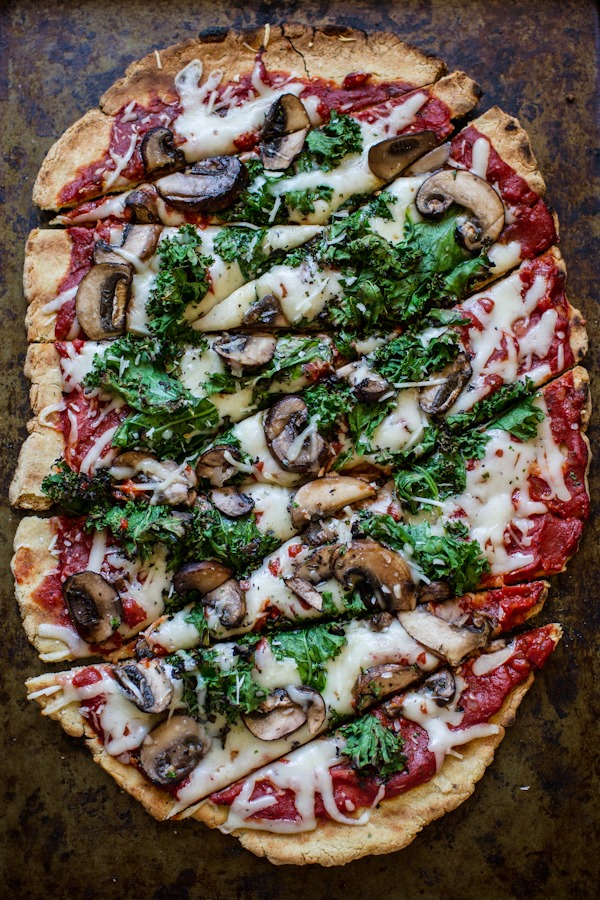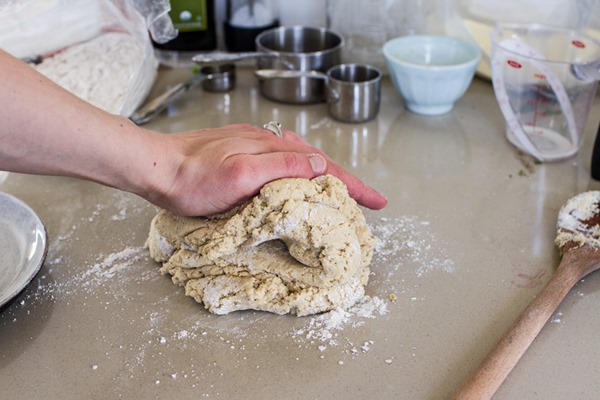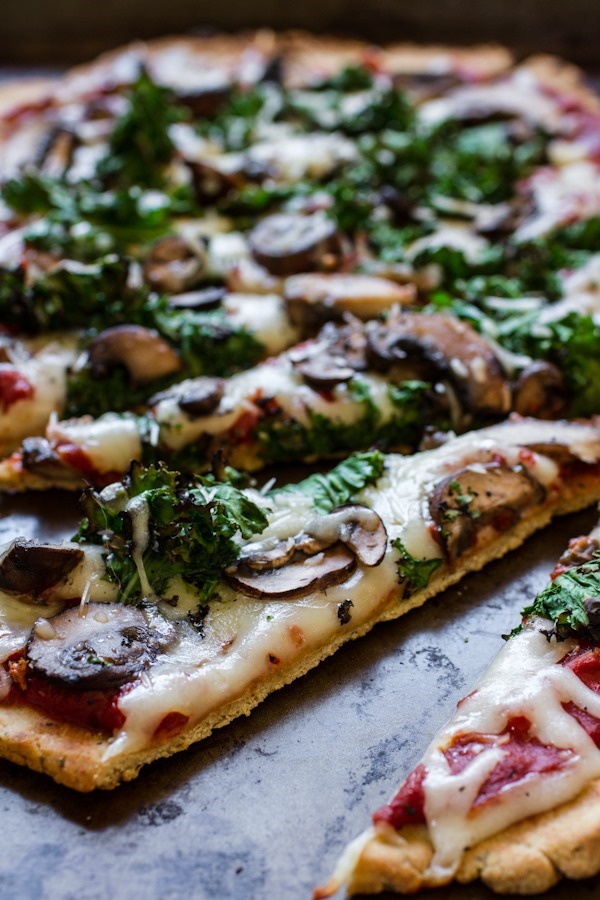Today we’re going to talk about making homemade gluten free pizza dough, with tips and tricks for success. There are a number of reasons to learn how to make gluten-free pizza dough. Increased awareness of gluten intolerance, sensitivity and celiac disease mean that more and more people are avoiding gluten in their diet.
Even if you don’t have any dietary restrictions, chances are strong that you know somebody who does. For this reason, gluten-free food and cooking is more popular than ever.
Check out these tips for making a prefect gluten-free pizza crust at home!

The best gluten-free pizza crust via Edible Perspective
Being gluten-free shouldn’t mean you can’t enjoy your favorite foods. As Peter Reinhart, baking guru and instructor of the Craftsy class Perfect Pizza at Home, says, “Hey, even if you’re gluten intolerant, you still want pizza!” But, the gluten-free baking wisdom I’m about to share isn’t limited to pizza: It can be carried over to other recipes to make gluten-free delicious no matter what you create!
Looking for a gluten-free AND vegan recipe? Well then check out this delicious vegan, gluten-free pizza crust recipe from the Edible Perspective, sure to please vegans and meat-eaters alike!
1. Consider how gluten-free your kitchen is.
When you’re making gluten-free pizza dough, or any gluten-free recipe for that matter, you’ll have to consider your working environment. Have you been preparing foods with wheat flour on the same surface? Do you keep a jar of wheat flour on the counter?
This “cross-contamination” may not have a profound effect if eaters have a minor gluten sensitivity, but it can be very dangerous and potentially harmful if eaters of the finished product have celiac disease. Make sure your kitchen and work area is free of products containing wheat.

Making gluten-free pizza crust via Edible Perspective
2. Take time to find the proper ingredients.
When you read a gluten-free pizza crust recipe, it might seem long and confusing. You may wonder, why not just swap out a single gluten-free flour such as rice or garbanzo flour for the wheat? Avoid the temptation: It takes a village of gluten-free flours to cover all the bases of texture and flavor when re-creating recipes that traditionally rely on wheat flour. Using a combination of flours will ensure that you get a pizza crust that stays together, is perfectly chewy and tastes great.
In the recipe featured in Perfect Pizza at Home, several type of flour are used, and each has a specific role. Tapioca flour is an important element in helping attain the perfect level chewiness; potato starch adds structure and flavor; rice flour adds bulk and a pleasing texture, but relies on the other flours for flavor. Hand-ground sunflowers are used as a flour too; this not only adds flavor, but the fat adds a pleasing, more moist texture to the finished crust.
3. Let it ferment.
With a gluten-free pizza crust, the starchy ingredients take some time to absorb the moisture from the wet ingredients. Therefore, allowing the mixture to ferment before baking, either at room temperature or in the refrigerator, is vital. Most recipes will have a suggested “rest” time for the dough. Be sure to follow the instructions for the best results.

Homemade veggie pizza with gluten-free crust via Edible Perspective
4. Baking twice is extra nice.
Think twice baking is just for biscotti? Not so! Gluten-free crust can tend toward dry, so Peter Reinhart has come up with an innovative method of ensuring a great texture and moisture. First, the ingredients are worked into an almost pancake-like batter and baked on both sides on pie plates. Next, the par-baked crust is topped and returned to the oven to bake fully.
5. Generously oil the baking surface.
Whether twice-baking or not, gluten-free doughs tend to be stickier than their wheat flour counterparts, so be sure to generously grease the cooking surface. This will prevent your crust from sticking to the baking sheet or pan you’re using. It can be helpful to have an offset icing spatula to assist in removing the crusts from the pan.
6. Thin is in
Gluten-free pizza dough recipes often yield a crust that is on the thinner side. While there are a few reasons, in the case of the recipe featured in Perfect Pizza at Home, the dough is actually more like a batter, so it must be fairly thin to bake through. If you prefer your pizza crust to reach greater heights, Peter Reinhart suggests using 1 teaspoon of xanthan gum for a little extra rise.

Share tips, start a discussion or ask one of our experts or other students a question.
No Responses to “Making Homemade Gluten-Free Pizza Dough: Tips & Tricks for Perfect Pies”